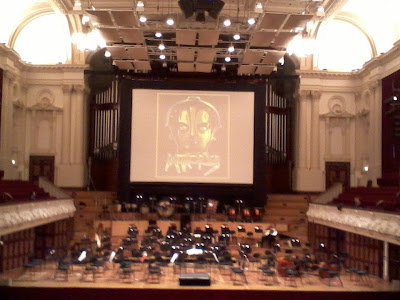In 2007, the project was announced, under the title Operation Rudolph, and would be the first collaboration between Aardman and Sony Pictures Entertainment. Aardman spent eighteen months on pre-production on the story and design in the UK before relocating to Sony's Culver City, US, for another eighteen months of production. In late April 2009, it was reported that production had begun with Aardman and Sony Pictures Imageworks working together on animation.
The film features the voice talents of James McAvoy, Hugh Laurie, Bill Nighy, Jim Broadbent, Imelda Staunton, Ashley Jensen, Laura Linney, Eva Longoria, Michael Palin, Robbie Coltrane, Joan Cusack, Rhys Darby, Jane Horrocks, Andy Serkis, and Dominic West. Aiding the movie greatly is its excellent voice casting, especially from McAvoy, Laurie, Nighy, Broadbant, and Stauton.
Clever and appealing for both children and adults, Arthur Christmas marks a successful entry into digital animated features for Aardman Animations. As directed by Smith and Cook, first-time feature helmers with long-term Aardman affiliations, the film boasts undeniably smart and eye-catching qualities that are significantly diluted by the relentlessly frantic and overbearing behavior of most characters; someone is always loudly imposing himself upon another, to diminishing returns of enjoyment. The film lacks the action-contraption dottiness of a Wallace and Gromit adventure, but it hits its own sweet spot of demented delight. It's better than 80% of the animated fare of the last few years. It's refreshing not to have to qualify the movie's appeal by appending the words, 'for the kids'. Despite the efforts of five writers and Aardman's trademark puppets, with their malleable eyebrows and cheeks bulging like those of a mumps sufferer, none of these characters are particularly endearing. Aardman's first computer-generated cartoon, does away with the clay but leaves the craft and emotion intact, resulting in a film that earns its place among the Aardman classics. The short attention spans of directors Smith and Cook are mostly forgivable because the movie is filled with so many entertaining characters. Most of the fun is in the deft characterizations, the zippy banter, and the joyous sight gags. The result is a movie that has glossier and more elaborately designed backgrounds while retaining the traditional values of storytelling and performance -- and, of course, talking animals. Nice action, fun animation, good voice acting, mediocre to dull story. In the end it all balances out.






.png)



